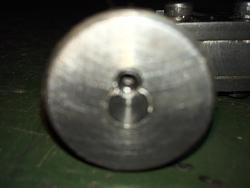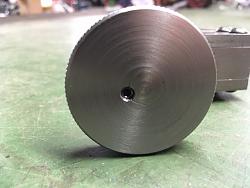Hi All
This is the method I have used on several projects to lock a nut to a piece of studding or a plain collar to a shaft (If placed at the end of a shaft) etc. I used this method to lock the wheels to the axles on a 5" gauge loco I built. It is easier than broach, cutting a keyway and then having to make the key as well as then having to drill and tap a hole in the coupling or collar to prevent it from sliding along the shaft. Not only does it secure both the nut to the studding not allowing it to move but it also creates a good drive key. The key is a grub screw which fits into a tapped hole drilled on the centreline/edge of both the shaft and nut, See photo.
I am sure there will be a few of you who can take advantage of this simple and quick method.
Please note that if you are putting a lot of torque into a shaft I would advise you use the correct key for the shaft diameter being used and not this method.
Thank you again for taking the time to view
The Home Engineer




 LinkBack URL
LinkBack URL About LinkBacks
About LinkBacks




 Reply With Quote
Reply With Quote



Bookmarks